Attached files
| file | filename |
|---|---|
| EX-99.1 - EX-99.1 - ENERGIZER HOLDINGS, INC. | enrpr3312021.htm |
| 8-K - 8-K - ENERGIZER HOLDINGS, INC. | enr-20210510.htm |
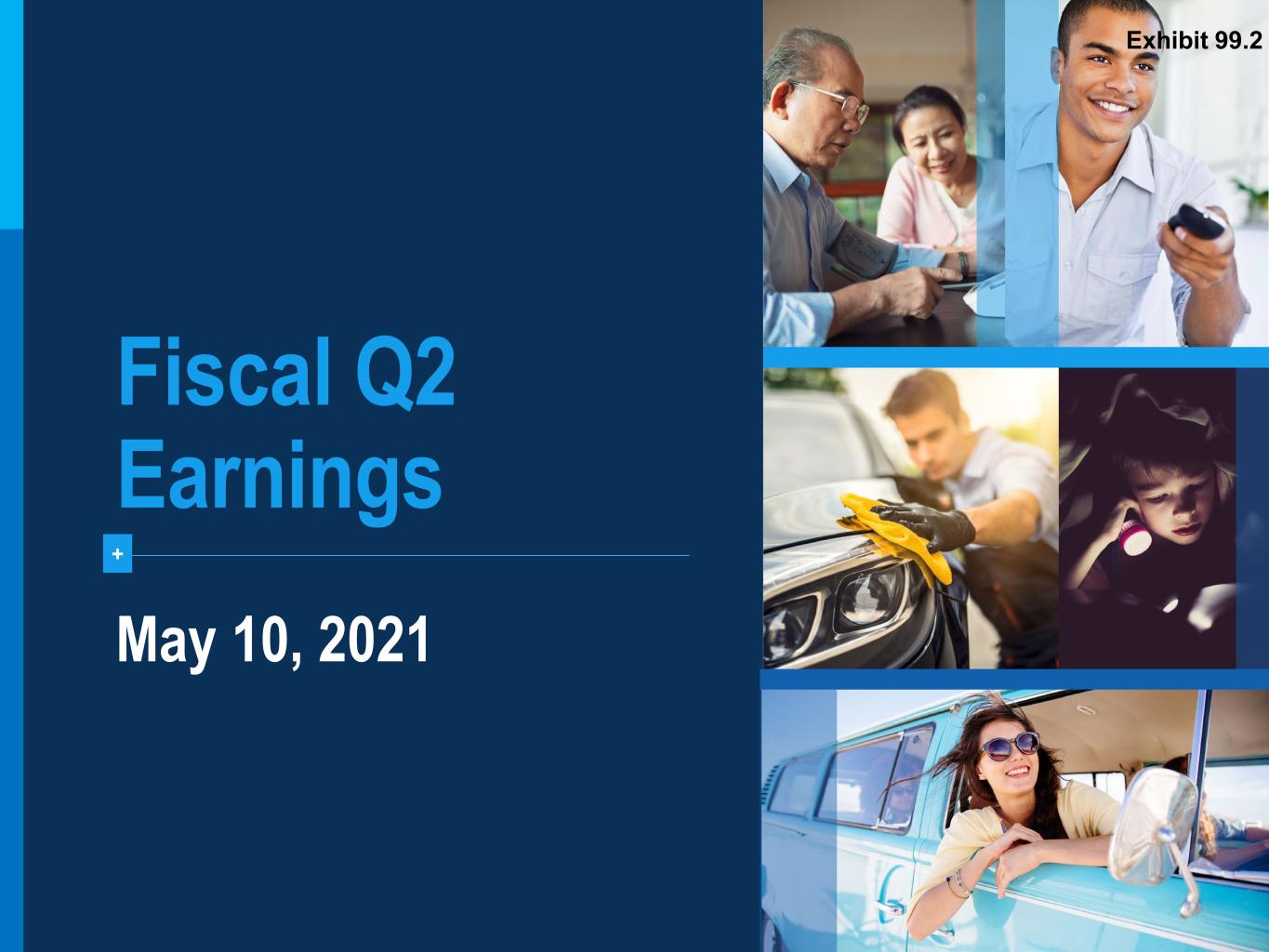
+ Fiscal Q2 Earnings May 10, 2021 Exhibit 99.2
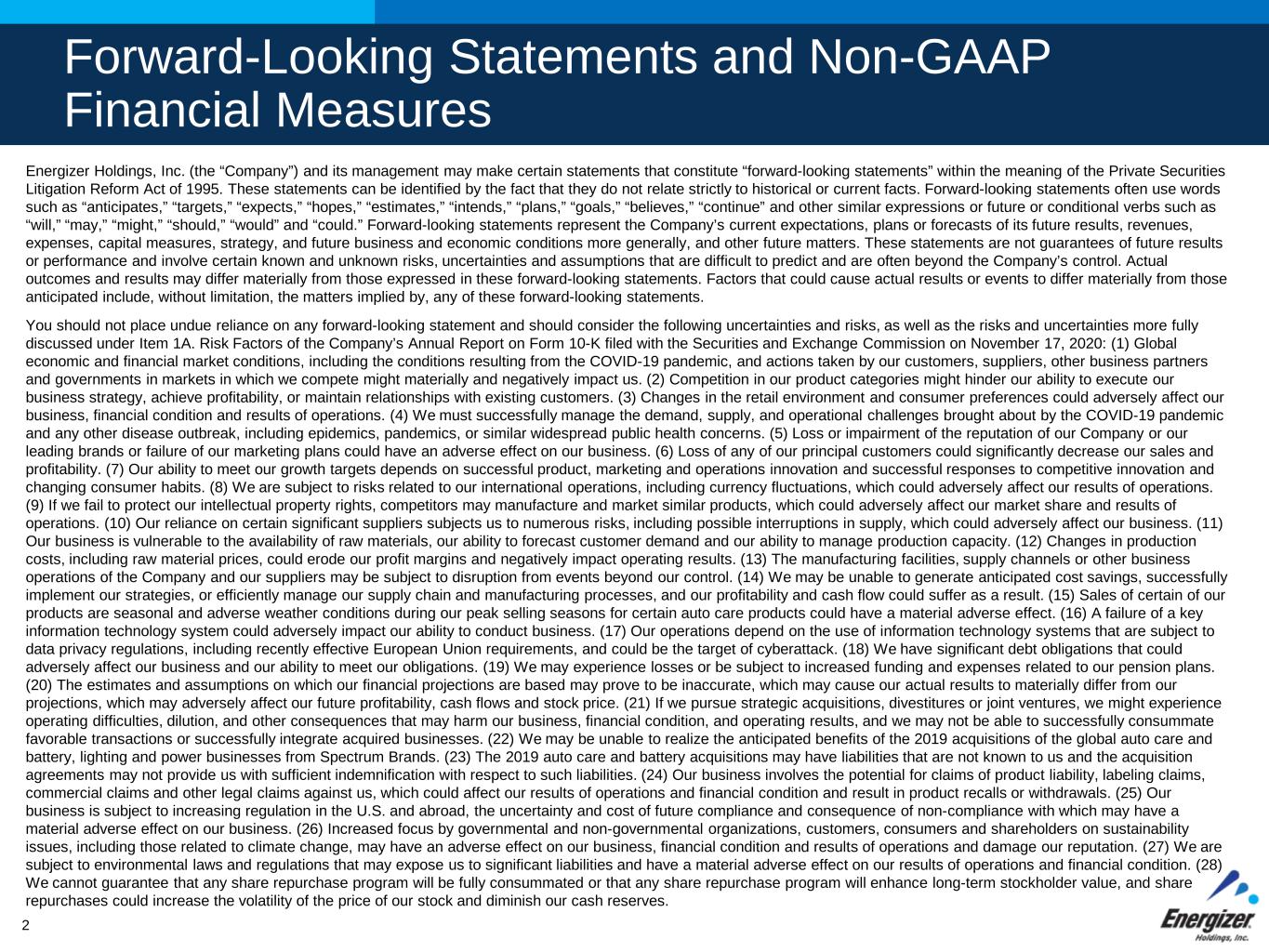
2 Forward-Looking Statements and Non-GAAP Financial Measures Energizer Holdings, Inc. (the “Company”) and its management may make certain statements that constitute “forward-looking statements” within the meaning of the Private Securities Litigation Reform Act of 1995. These statements can be identified by the fact that they do not relate strictly to historical or current facts. Forward-looking statements often use words such as “anticipates,” “targets,” “expects,” “hopes,” “estimates,” “intends,” “plans,” “goals,” “believes,” “continue” and other similar expressions or future or conditional verbs such as “will,” “may,” “might,” “should,” “would” and “could.” Forward-looking statements represent the Company’s current expectations, plans or forecasts of its future results, revenues, expenses, capital measures, strategy, and future business and economic conditions more generally, and other future matters. These statements are not guarantees of future results or performance and involve certain known and unknown risks, uncertainties and assumptions that are difficult to predict and are often beyond the Company’s control. Actual outcomes and results may differ materially from those expressed in these forward-looking statements. Factors that could cause actual results or events to differ materially from those anticipated include, without limitation, the matters implied by, any of these forward-looking statements. You should not place undue reliance on any forward-looking statement and should consider the following uncertainties and risks, as well as the risks and uncertainties more fully discussed under Item 1A. Risk Factors of the Company’s Annual Report on Form 10-K filed with the Securities and Exchange Commission on November 17, 2020: (1) Global economic and financial market conditions, including the conditions resulting from the COVID-19 pandemic, and actions taken by our customers, suppliers, other business partners and governments in markets in which we compete might materially and negatively impact us. (2) Competition in our product categories might hinder our ability to execute our business strategy, achieve profitability, or maintain relationships with existing customers. (3) Changes in the retail environment and consumer preferences could adversely affect our business, financial condition and results of operations. (4) We must successfully manage the demand, supply, and operational challenges brought about by the COVID-19 pandemic and any other disease outbreak, including epidemics, pandemics, or similar widespread public health concerns. (5) Loss or impairment of the reputation of our Company or our leading brands or failure of our marketing plans could have an adverse effect on our business. (6) Loss of any of our principal customers could significantly decrease our sales and profitability. (7) Our ability to meet our growth targets depends on successful product, marketing and operations innovation and successful responses to competitive innovation and changing consumer habits. (8) We are subject to risks related to our international operations, including currency fluctuations, which could adversely affect our results of operations. (9) If we fail to protect our intellectual property rights, competitors may manufacture and market similar products, which could adversely affect our market share and results of operations. (10) Our reliance on certain significant suppliers subjects us to numerous risks, including possible interruptions in supply, which could adversely affect our business. (11) Our business is vulnerable to the availability of raw materials, our ability to forecast customer demand and our ability to manage production capacity. (12) Changes in production costs, including raw material prices, could erode our profit margins and negatively impact operating results. (13) The manufacturing facilities, supply channels or other business operations of the Company and our suppliers may be subject to disruption from events beyond our control. (14) We may be unable to generate anticipated cost savings, successfully implement our strategies, or efficiently manage our supply chain and manufacturing processes, and our profitability and cash flow could suffer as a result. (15) Sales of certain of our products are seasonal and adverse weather conditions during our peak selling seasons for certain auto care products could have a material adverse effect. (16) A failure of a key information technology system could adversely impact our ability to conduct business. (17) Our operations depend on the use of information technology systems that are subject to data privacy regulations, including recently effective European Union requirements, and could be the target of cyberattack. (18) We have significant debt obligations that could adversely affect our business and our ability to meet our obligations. (19) We may experience losses or be subject to increased funding and expenses related to our pension plans. (20) The estimates and assumptions on which our financial projections are based may prove to be inaccurate, which may cause our actual results to materially differ from our projections, which may adversely affect our future profitability, cash flows and stock price. (21) If we pursue strategic acquisitions, divestitures or joint ventures, we might experience operating difficulties, dilution, and other consequences that may harm our business, financial condition, and operating results, and we may not be able to successfully consummate favorable transactions or successfully integrate acquired businesses. (22) We may be unable to realize the anticipated benefits of the 2019 acquisitions of the global auto care and battery, lighting and power businesses from Spectrum Brands. (23) The 2019 auto care and battery acquisitions may have liabilities that are not known to us and the acquisition agreements may not provide us with sufficient indemnification with respect to such liabilities. (24) Our business involves the potential for claims of product liability, labeling claims, commercial claims and other legal claims against us, which could affect our results of operations and financial condition and result in product recalls or withdrawals. (25) Our business is subject to increasing regulation in the U.S. and abroad, the uncertainty and cost of future compliance and consequence of non-compliance with which may have a material adverse effect on our business. (26) Increased focus by governmental and non-governmental organizations, customers, consumers and shareholders on sustainability issues, including those related to climate change, may have an adverse effect on our business, financial condition and results of operations and damage our reputation. (27) We are subject to environmental laws and regulations that may expose us to significant liabilities and have a material adverse effect on our results of operations and financial condition. (28) We cannot guarantee that any share repurchase program will be fully consummated or that any share repurchase program will enhance long-term stockholder value, and share repurchases could increase the volatility of the price of our stock and diminish our cash reserves.
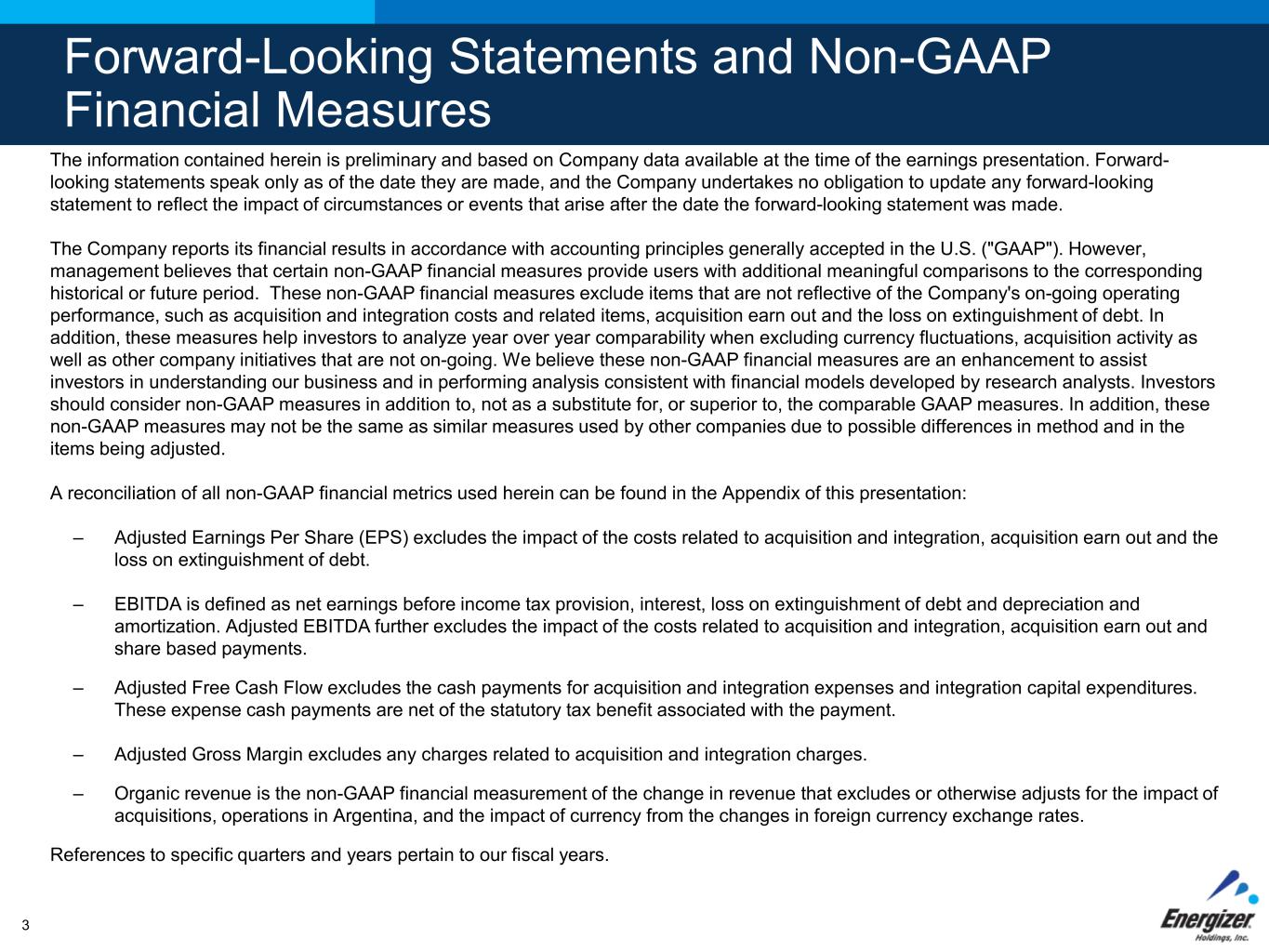
3 Forward-Looking Statements and Non-GAAP Financial Measures The information contained herein is preliminary and based on Company data available at the time of the earnings presentation. Forward- looking statements speak only as of the date they are made, and the Company undertakes no obligation to update any forward-looking statement to reflect the impact of circumstances or events that arise after the date the forward-looking statement was made. The Company reports its financial results in accordance with accounting principles generally accepted in the U.S. ("GAAP"). However, management believes that certain non-GAAP financial measures provide users with additional meaningful comparisons to the corresponding historical or future period. These non-GAAP financial measures exclude items that are not reflective of the Company's on-going operating performance, such as acquisition and integration costs and related items, acquisition earn out and the loss on extinguishment of debt. In addition, these measures help investors to analyze year over year comparability when excluding currency fluctuations, acquisition activity as well as other company initiatives that are not on-going. We believe these non-GAAP financial measures are an enhancement to assist investors in understanding our business and in performing analysis consistent with financial models developed by research analysts. Investors should consider non-GAAP measures in addition to, not as a substitute for, or superior to, the comparable GAAP measures. In addition, these non-GAAP measures may not be the same as similar measures used by other companies due to possible differences in method and in the items being adjusted. A reconciliation of all non-GAAP financial metrics used herein can be found in the Appendix of this presentation: ‒ Adjusted Earnings Per Share (EPS) excludes the impact of the costs related to acquisition and integration, acquisition earn out and the loss on extinguishment of debt. ‒ EBITDA is defined as net earnings before income tax provision, interest, loss on extinguishment of debt and depreciation and amortization. Adjusted EBITDA further excludes the impact of the costs related to acquisition and integration, acquisition earn out and share based payments. ‒ Adjusted Free Cash Flow excludes the cash payments for acquisition and integration expenses and integration capital expenditures. These expense cash payments are net of the statutory tax benefit associated with the payment. ‒ Adjusted Gross Margin excludes any charges related to acquisition and integration charges. ‒ Organic revenue is the non-GAAP financial measurement of the change in revenue that excludes or otherwise adjusts for the impact of acquisitions, operations in Argentina, and the impact of currency from the changes in foreign currency exchange rates. References to specific quarters and years pertain to our fiscal years.

+ Financial Results Second Quarter Fiscal 2021
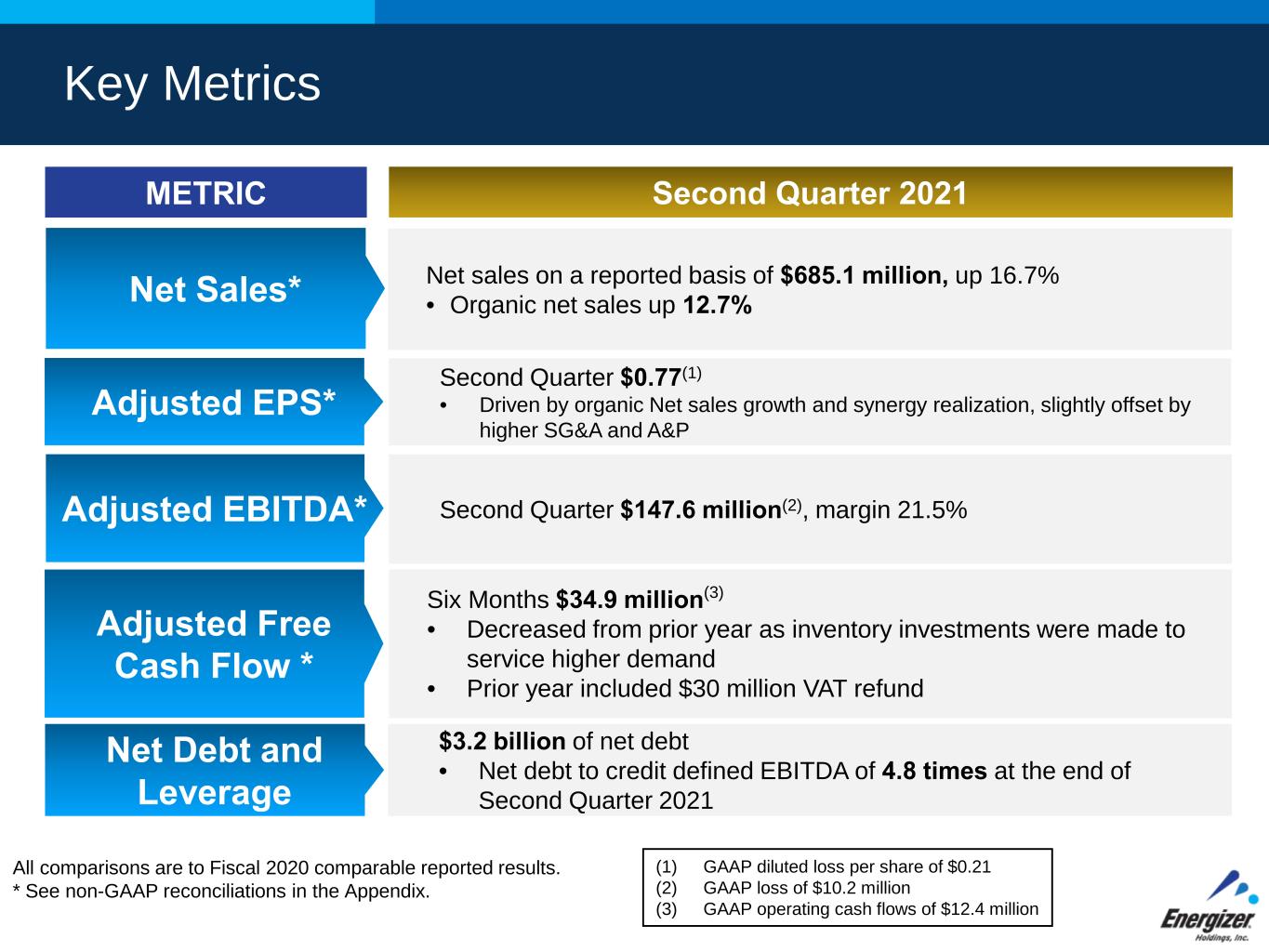
METRIC Second Quarter 2021 Adjusted EPS* Adjusted Free Cash Flow * Net Debt and Leverage Second Quarter $147.6 million(2), margin 21.5% Six Months $34.9 million(3) • Decreased from prior year as inventory investments were made to service higher demand • Prior year included $30 million VAT refund $3.2 billion of net debt • Net debt to credit defined EBITDA of 4.8 times at the end of Second Quarter 2021 All comparisons are to Fiscal 2020 comparable reported results. * See non-GAAP reconciliations in the Appendix. Adjusted EBITDA* Second Quarter $0.77(1) • Driven by organic Net sales growth and synergy realization, slightly offset by higher SG&A and A&P Key Metrics Net Sales* Net sales on a reported basis of $685.1 million, up 16.7%• Organic net sales up 12.7% (1) GAAP diluted loss per share of $0.21 (2) GAAP loss of $10.2 million (3) GAAP operating cash flows of $12.4 million
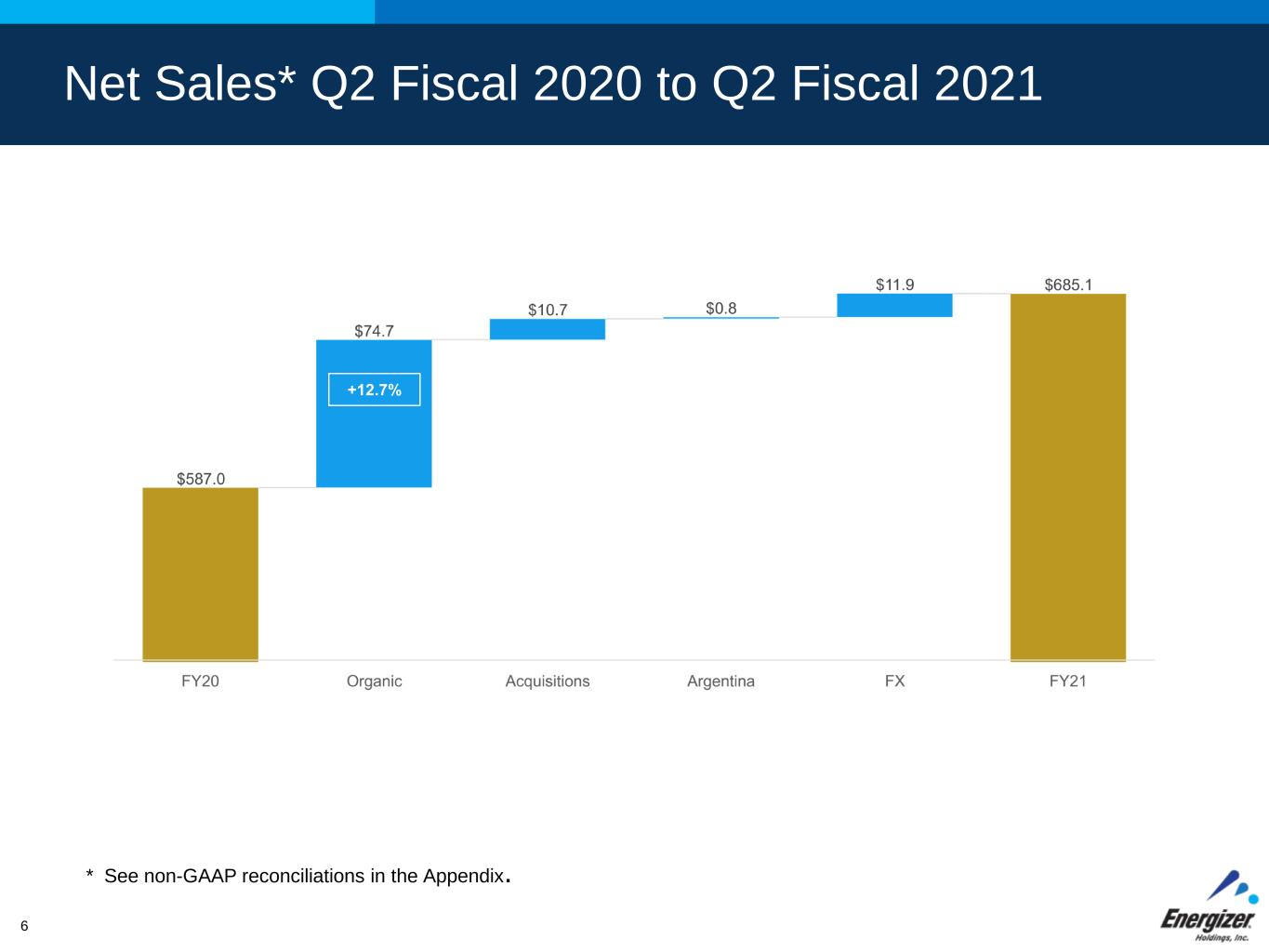
6 Net Sales* Q2 Fiscal 2020 to Q2 Fiscal 2021 * See non-GAAP reconciliations in the Appendix. +12.7%
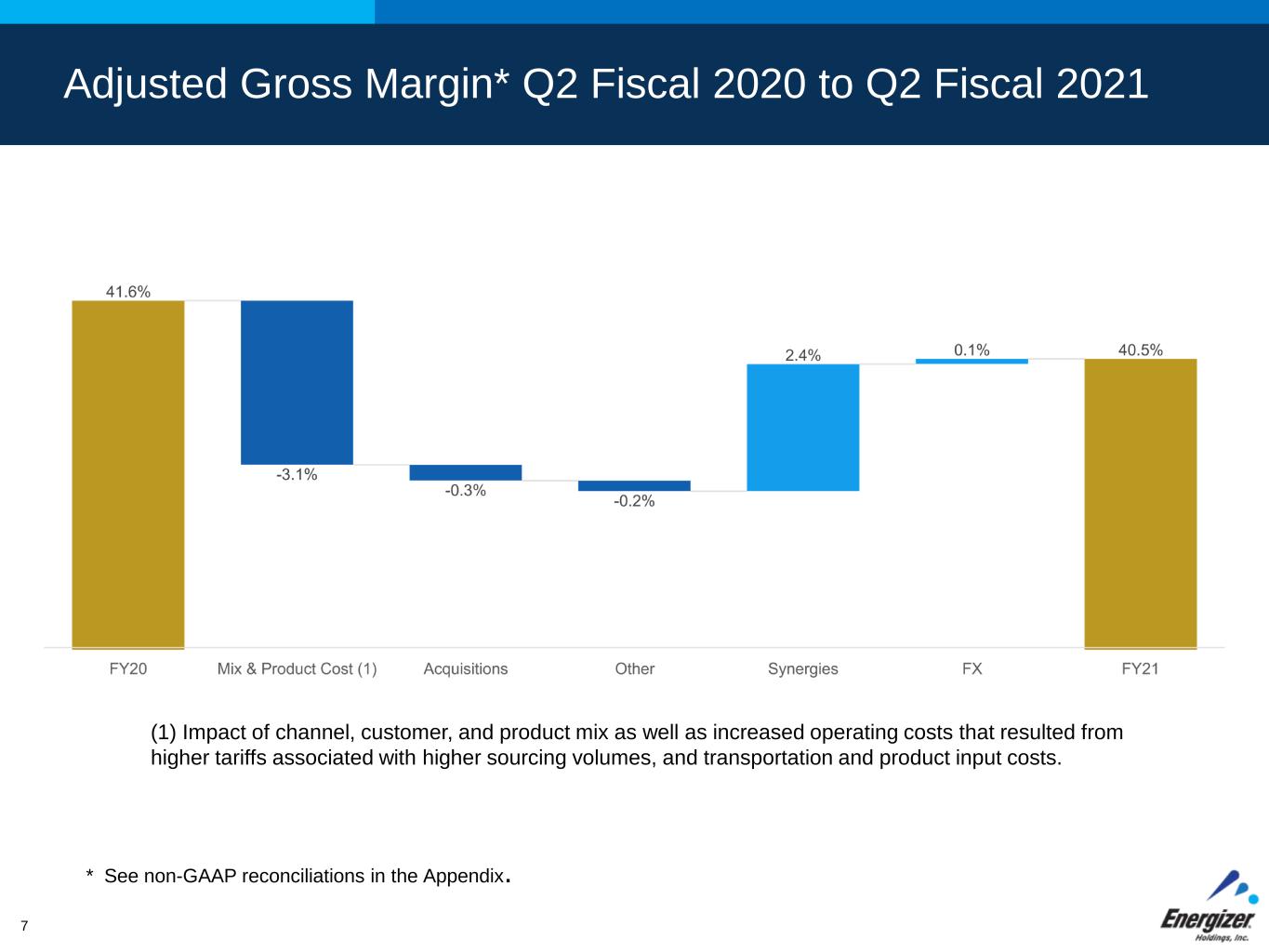
7 Adjusted Gross Margin* Q2 Fiscal 2020 to Q2 Fiscal 2021 * See non-GAAP reconciliations in the Appendix. (1) Impact of channel, customer, and product mix as well as increased operating costs that resulted from higher tariffs associated with higher sourcing volumes, and transportation and product input costs.
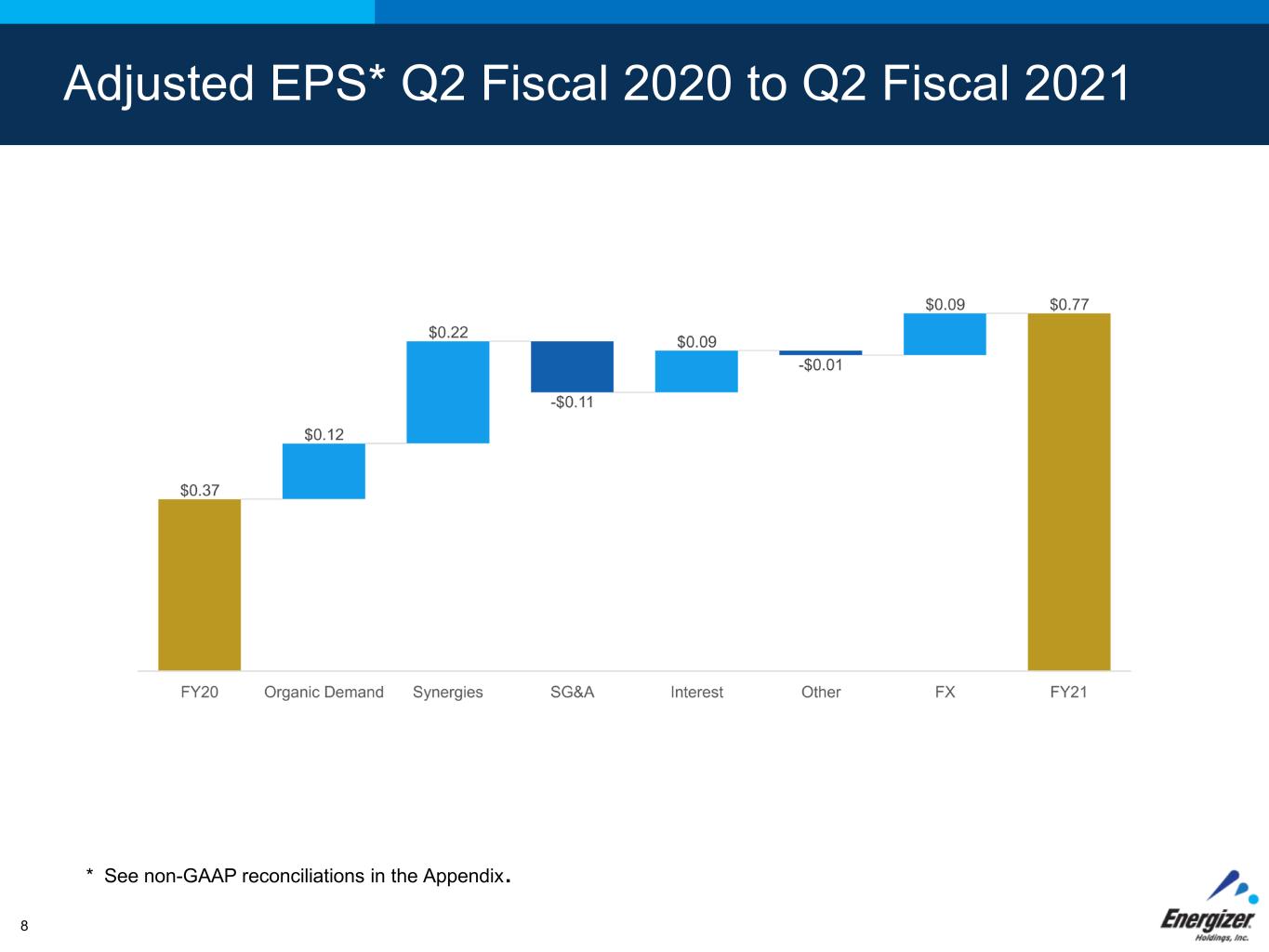
Adjusted EPS* Q2 Fiscal 2020 to Q2 Fiscal 2021 8 * See non-GAAP reconciliations in the Appendix.
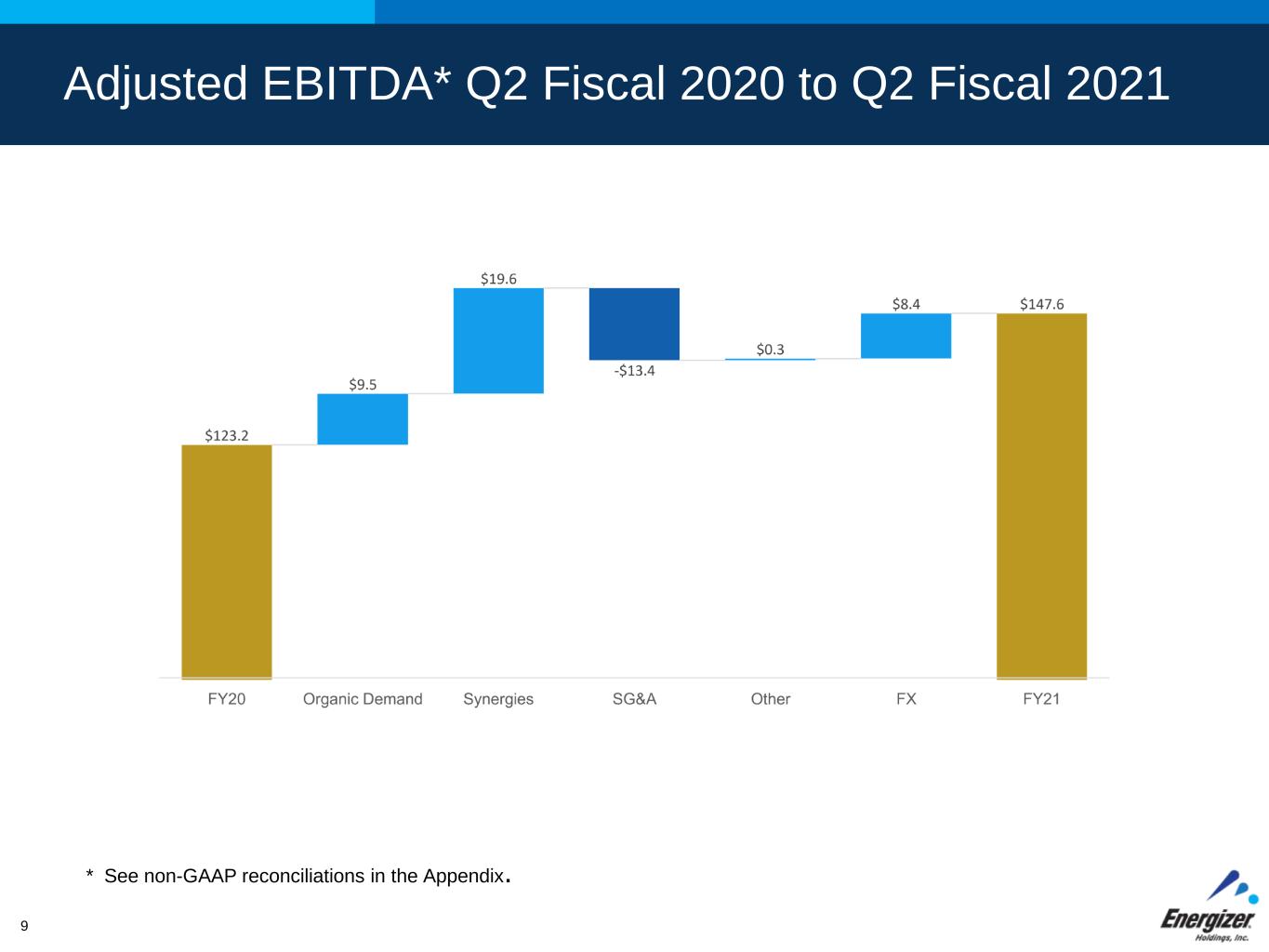
Adjusted EBITDA* Q2 Fiscal 2020 to Q2 Fiscal 2021 9 * See non-GAAP reconciliations in the Appendix.

+ Outlook Fiscal 2021
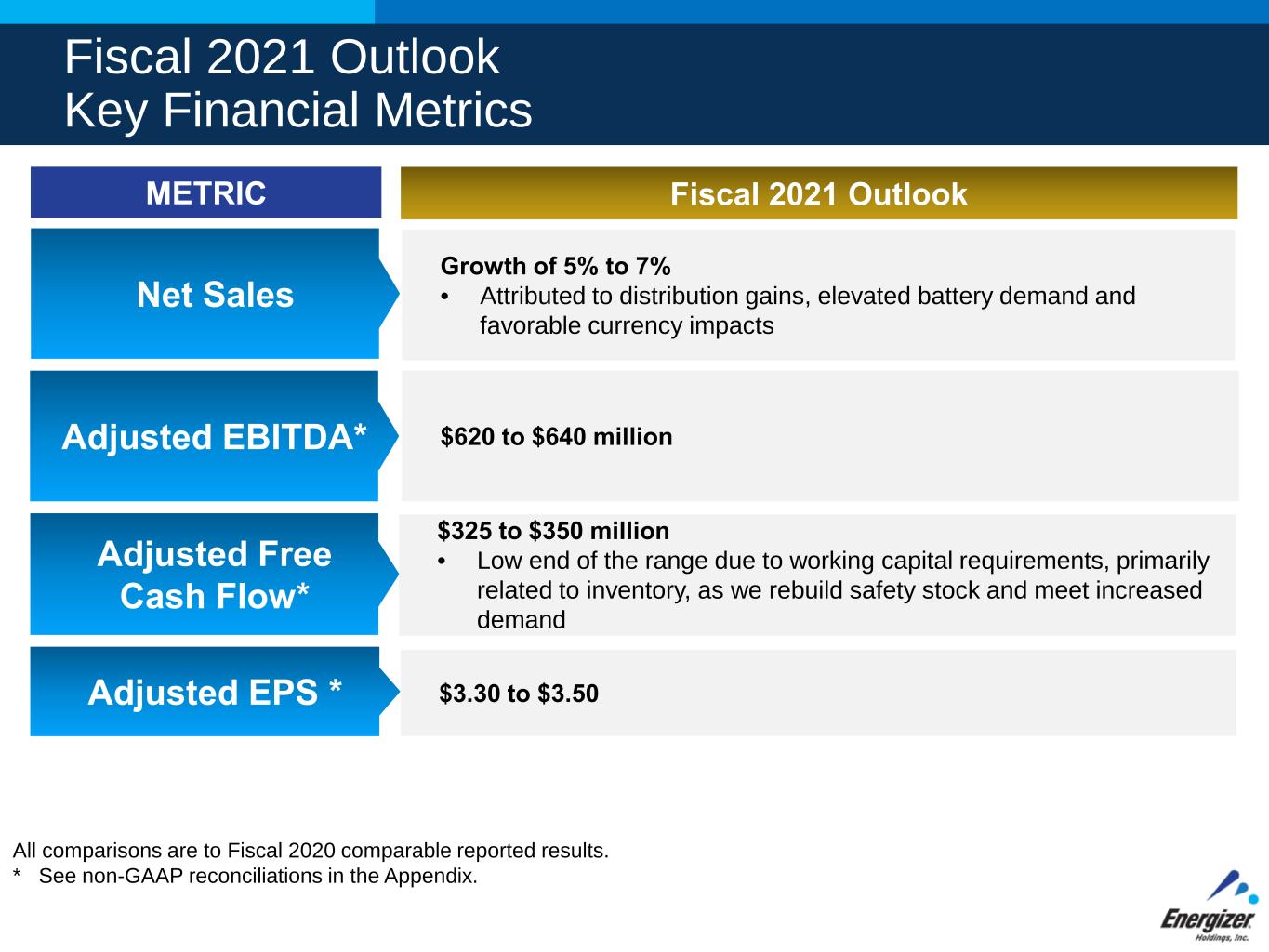
Fiscal 2021 Outlook Key Financial Metrics METRIC Fiscal 2021 Outlook Adjusted EBITDA* Adjusted Free Cash Flow* Adjusted EPS * $620 to $640 million $325 to $350 million • Low end of the range due to working capital requirements, primarily related to inventory, as we rebuild safety stock and meet increased demand $3.30 to $3.50 All comparisons are to Fiscal 2020 comparable reported results. * See non-GAAP reconciliations in the Appendix. Net Sales Growth of 5% to 7% • Attributed to distribution gains, elevated battery demand and favorable currency impacts
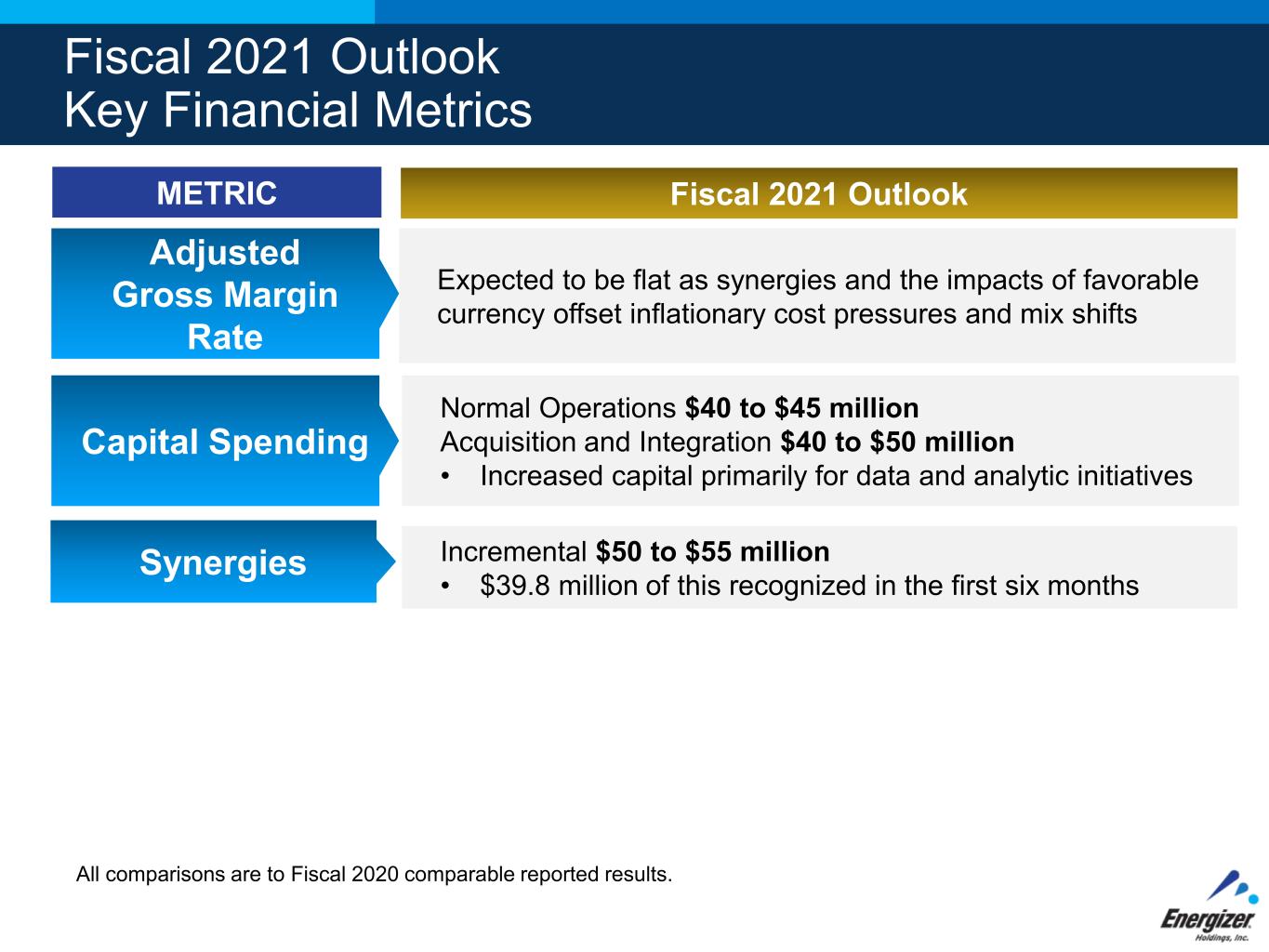
Fiscal 2021 Outlook Key Financial Metrics METRIC Fiscal 2021 Outlook Capital Spending Normal Operations $40 to $45 million Acquisition and Integration $40 to $50 million • Increased capital primarily for data and analytic initiatives All comparisons are to Fiscal 2020 comparable reported results. Adjusted Gross Margin Rate Expected to be flat as synergies and the impacts of favorable currency offset inflationary cost pressures and mix shifts Synergies Incremental $50 to $55 million • $39.8 million of this recognized in the first six months

13 Appendix Materials
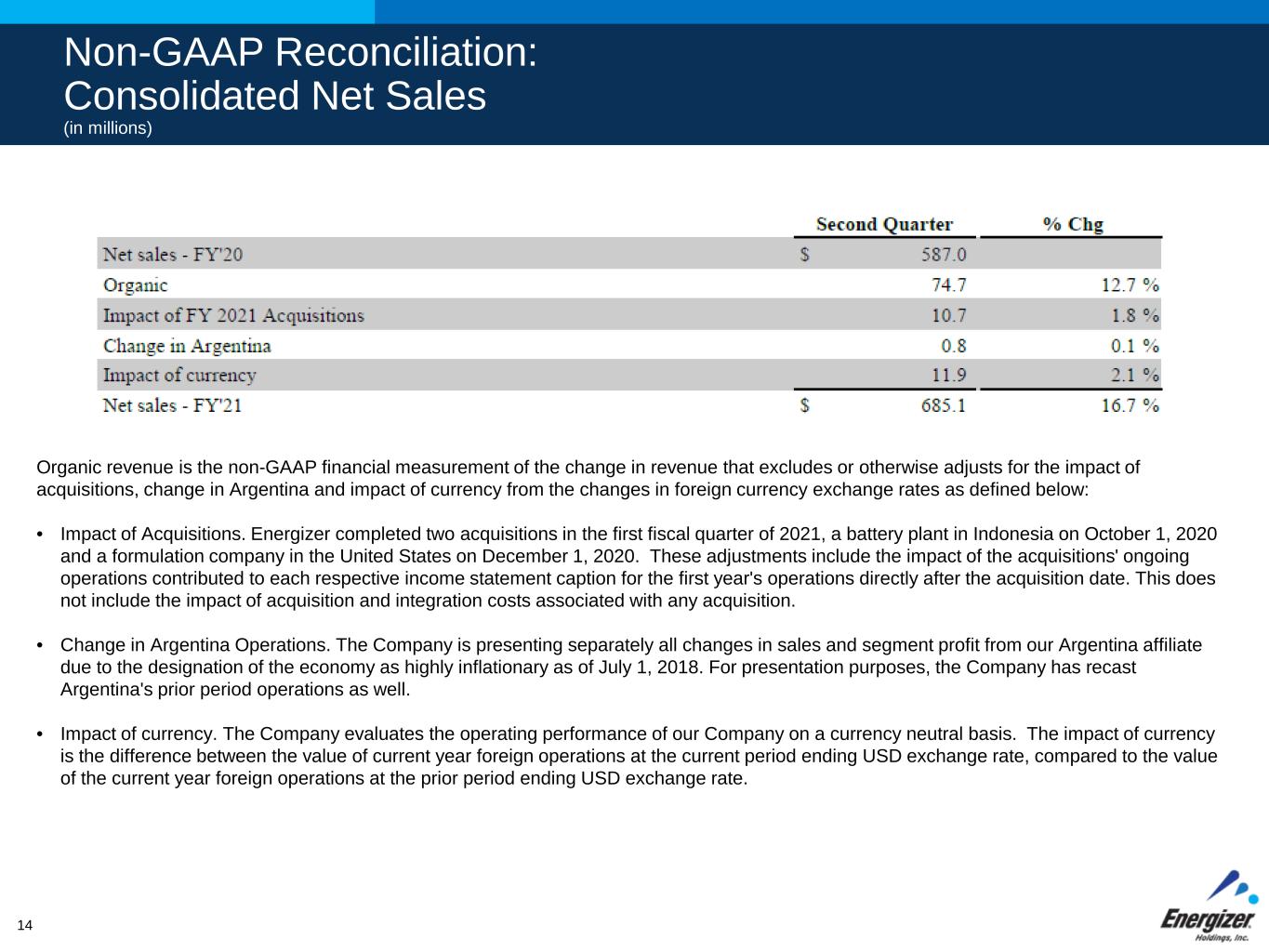
14 Non-GAAP Reconciliation: Consolidated Net Sales (in millions) Organic revenue is the non-GAAP financial measurement of the change in revenue that excludes or otherwise adjusts for the impact of acquisitions, change in Argentina and impact of currency from the changes in foreign currency exchange rates as defined below: • Impact of Acquisitions. Energizer completed two acquisitions in the first fiscal quarter of 2021, a battery plant in Indonesia on October 1, 2020 and a formulation company in the United States on December 1, 2020. These adjustments include the impact of the acquisitions' ongoing operations contributed to each respective income statement caption for the first year's operations directly after the acquisition date. This does not include the impact of acquisition and integration costs associated with any acquisition. • Change in Argentina Operations. The Company is presenting separately all changes in sales and segment profit from our Argentina affiliate due to the designation of the economy as highly inflationary as of July 1, 2018. For presentation purposes, the Company has recast Argentina's prior period operations as well. • Impact of currency. The Company evaluates the operating performance of our Company on a currency neutral basis. The impact of currency is the difference between the value of current year foreign operations at the current period ending USD exchange rate, compared to the value of the current year foreign operations at the prior period ending USD exchange rate.
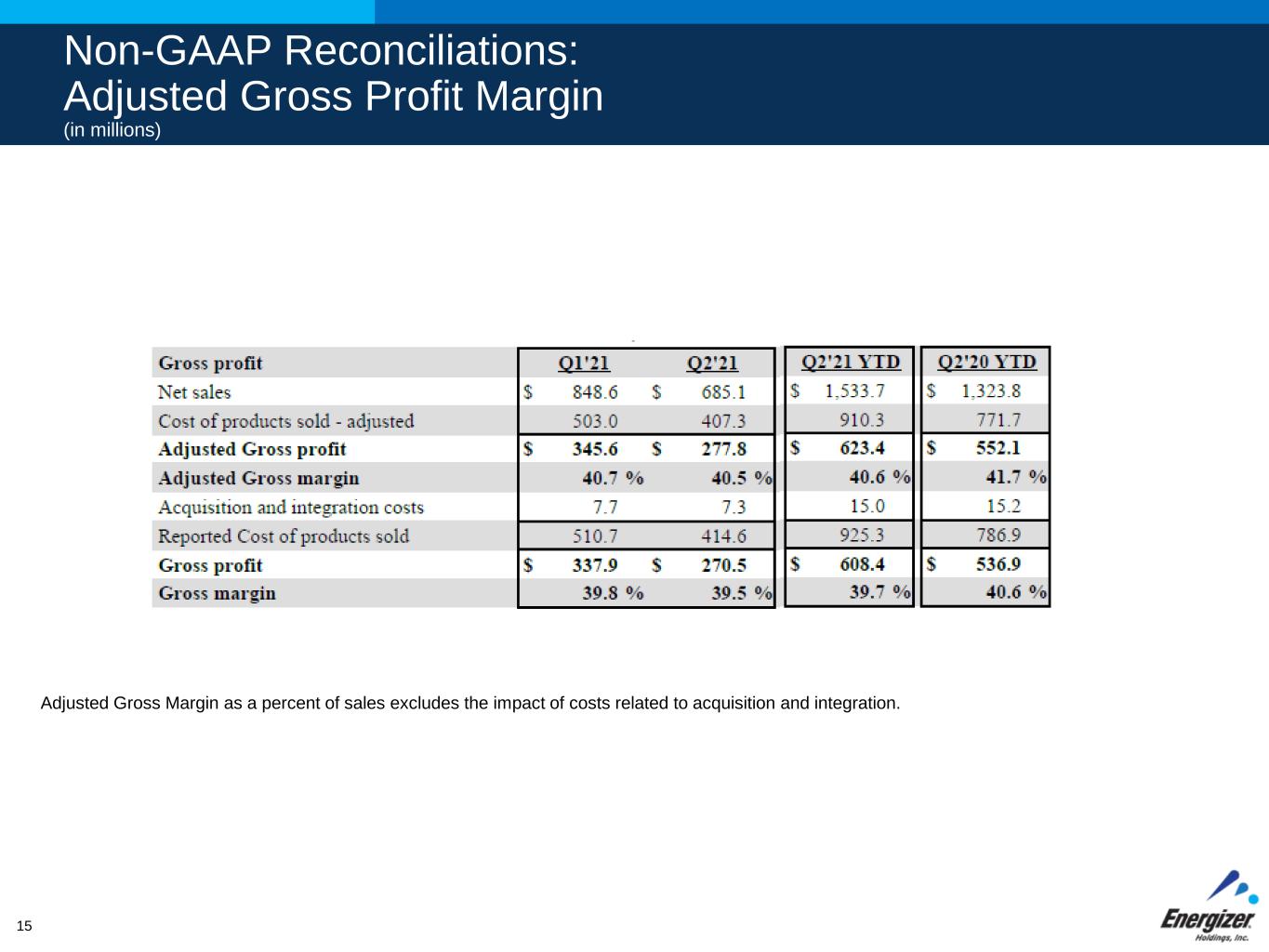
Non-GAAP Reconciliations: Adjusted Gross Profit Margin (in millions) 15 Adjusted Gross Margin as a percent of sales excludes the impact of costs related to acquisition and integration.
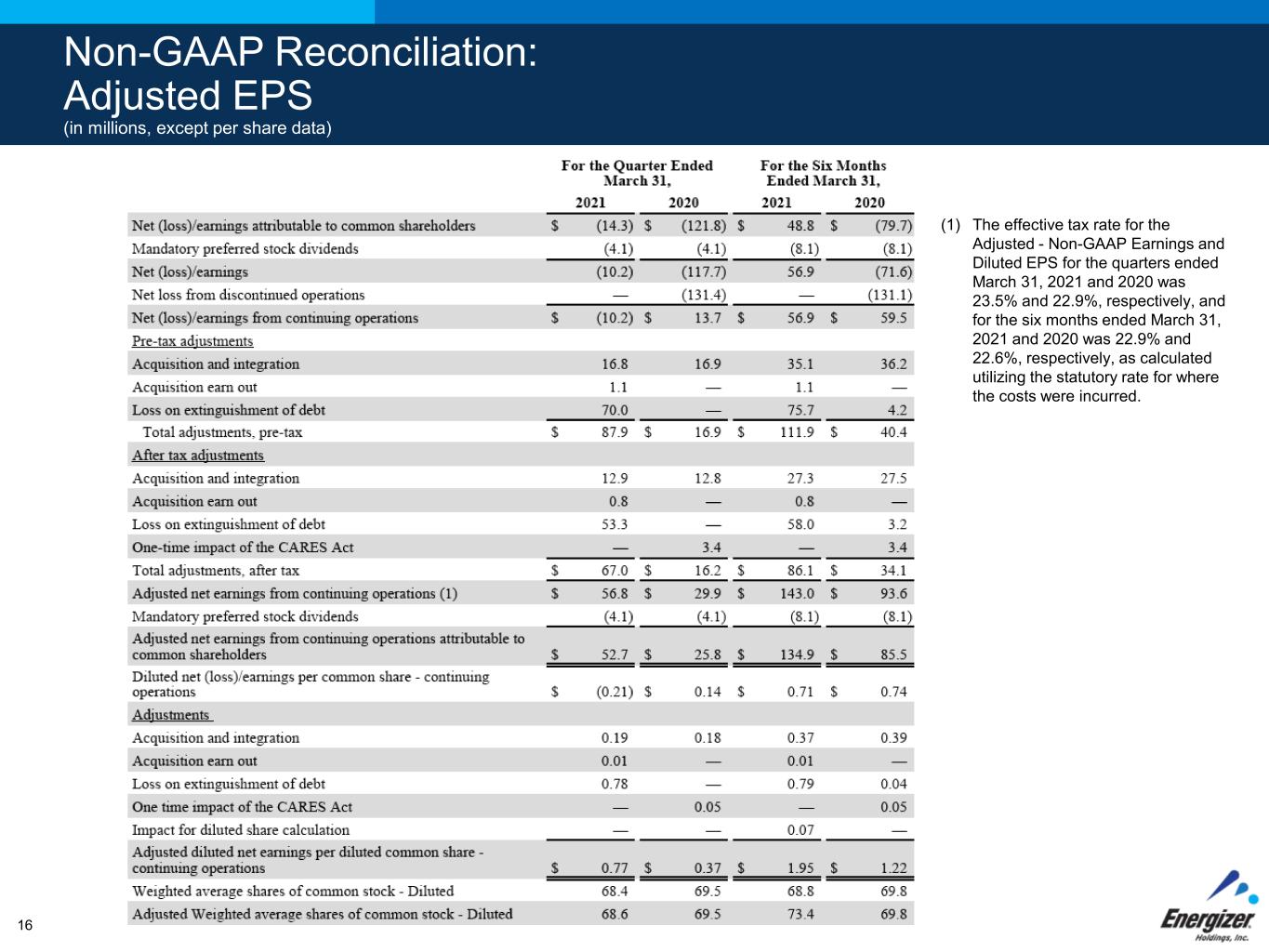
16 Non-GAAP Reconciliation: Adjusted EPS (in millions, except per share data) (1) The effective tax rate for the Adjusted - Non-GAAP Earnings and Diluted EPS for the quarters ended March 31, 2021 and 2020 was 23.5% and 22.9%, respectively, and for the six months ended March 31, 2021 and 2020 was 22.9% and 22.6%, respectively, as calculated utilizing the statutory rate for where the costs were incurred.
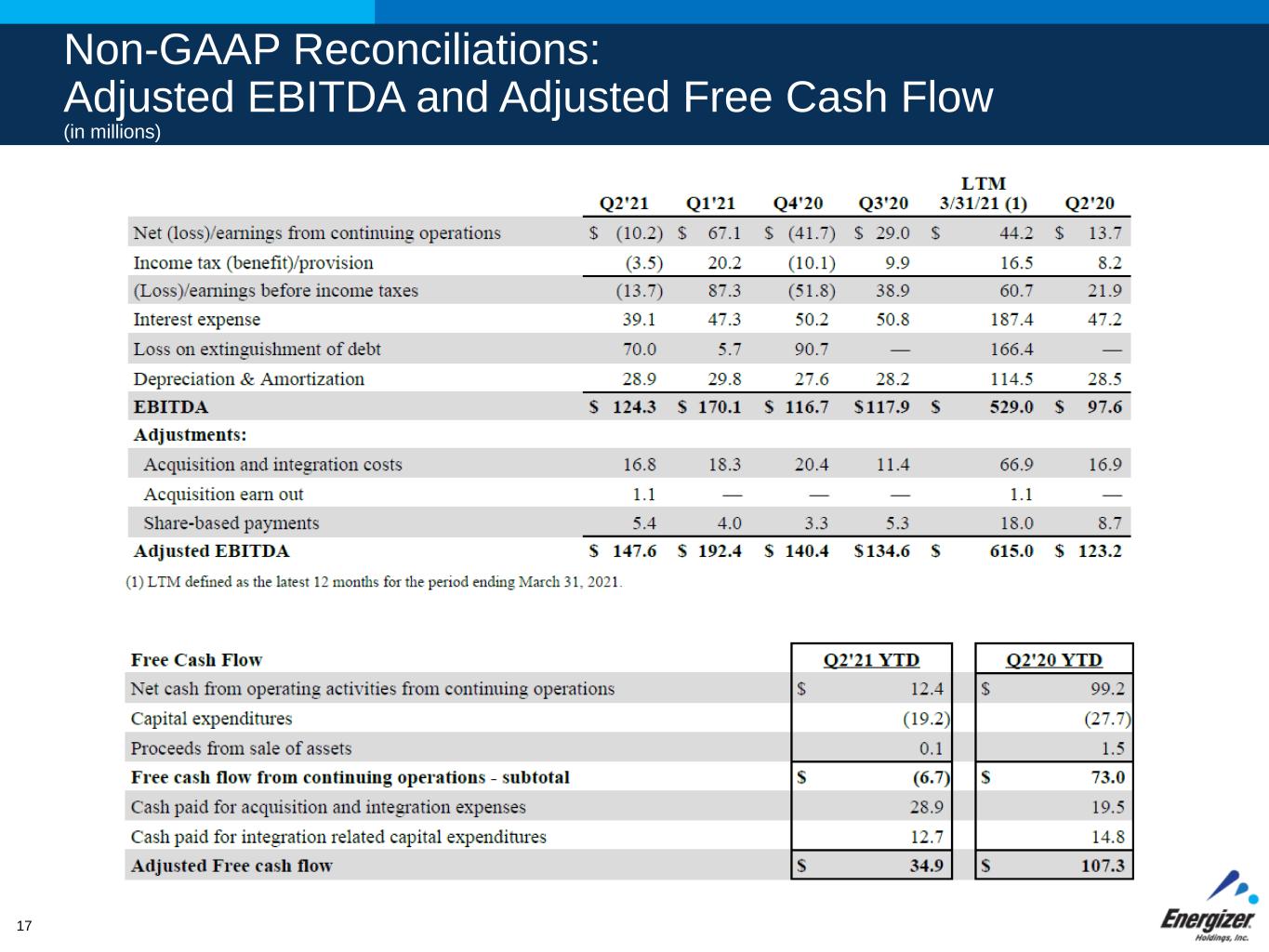
Non-GAAP Reconciliations: Adjusted EBITDA and Adjusted Free Cash Flow (in millions) 17
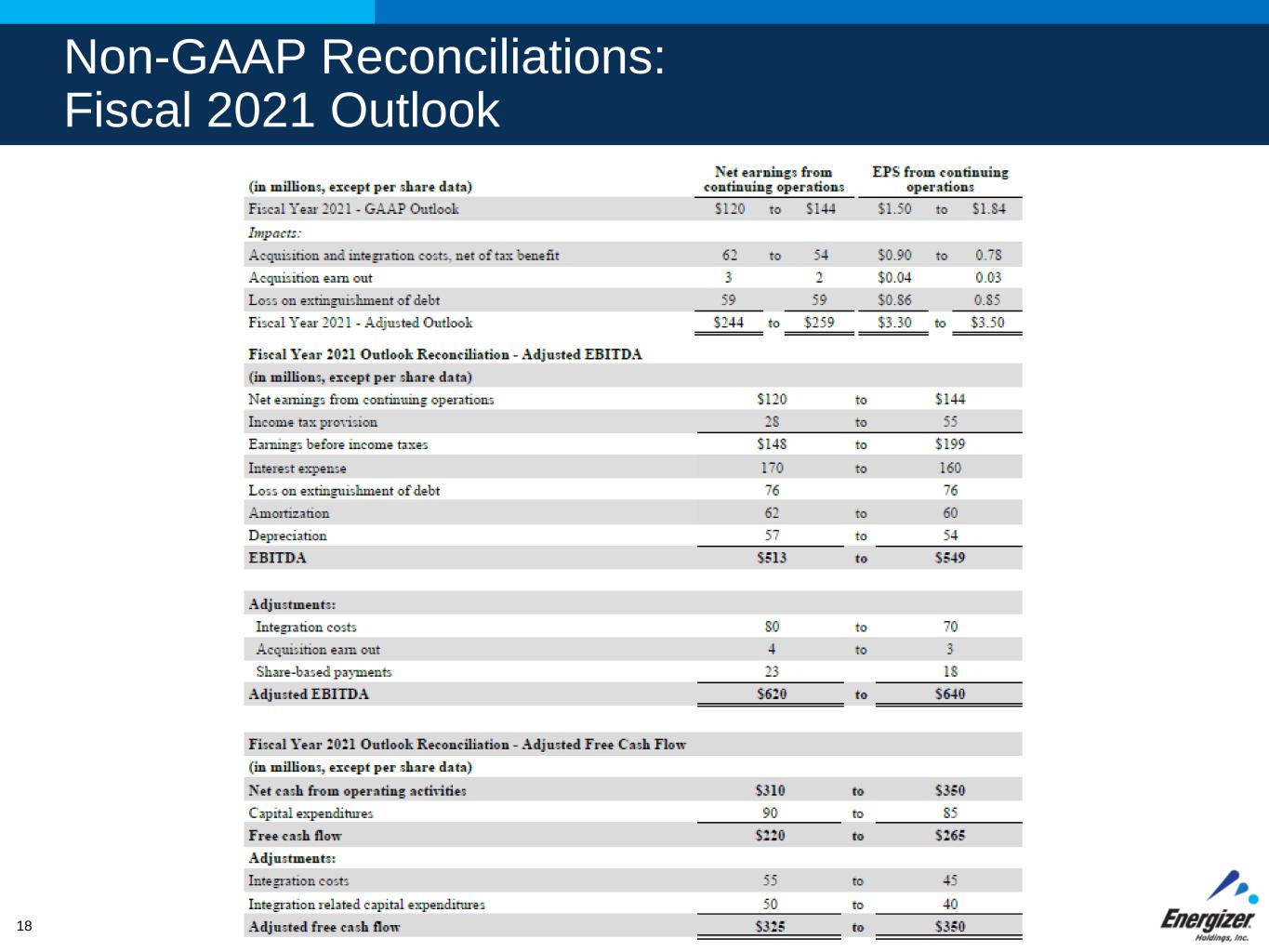
Non-GAAP Reconciliations: Fiscal 2021 Outlook 18
